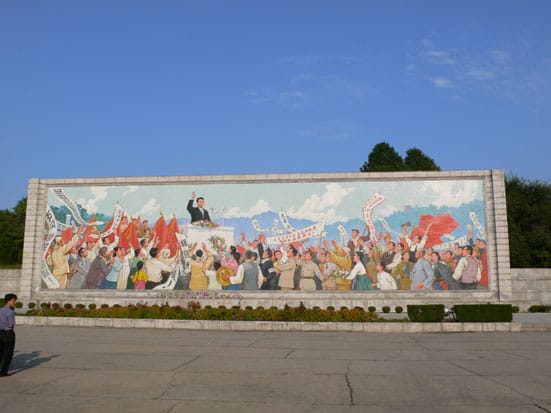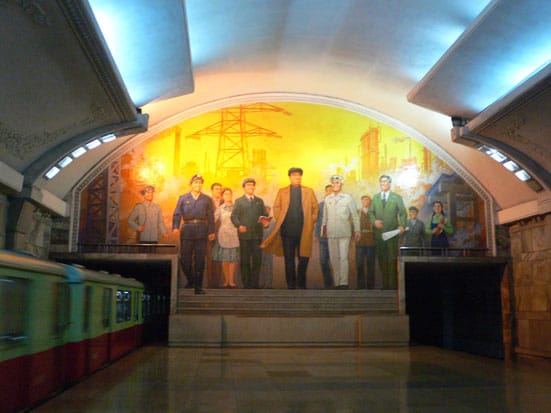Dear Artvehicle,
Amidst the tantalising snippets of information about North Korea
acquired through news reports, one is hard-pushed to find any
commentary on art in the country. Walking through the streets of
Pyongyang, however, you are struck by the ubiquity of it. As with all
that is on display in the Hermit Kingdom, it serves to promote the
government, and far from lending charm to the surroundings, its only
achievement (at least for the outsider) is to create a troubling and
suffocating atmosphere.
North Korea's socialist realism art style, reminiscent of the
propaganda art that sprang up in Russia and then China during the
Russian and Cultural revolutions (and no less misleading) shot into
existence during the 1940s, when, after decades of struggle against the
Japanese occupation, the country was finally liberated. Although in
reality this was a side-effect of the US's obliteration of the Japanese
naval fleet at the end of the Second World War, the people of North
Korea consider their path to freedom to have been beaten out by Kim Il
Sung, who subsequently became president of the fledgling republic. The
combination of the force of Kim's will and personality and a people
decimated by decades of oppression led to the birth of one of the
world's most fanatical personality cults.
The moment that the country and its society fell into step behind Kim
Il Sung, its creative output followed suit. Some of the only visible
signs of North Korea's artistic past lie within the Koryo Fine Arts
Museum in Pyongyang, where it is possible to pinpoint the exact moment
when the country disowned its cultural heritage. Herons and waterfalls
give way to Kim Il Sung and Kim Jong Il's inescapable, benevolent and
watchful gaze. Often, they are surrounded by hordes of adoring
citizens, whose faces are lit up by the rapture of boundless love and
devotion. One is reminded, not a little uncomfortably, of scenes from
the New Testament. Indeed, the North Koreans' holy trinity is completed
by Kim Jong Suk (wife of Kim Il Sung and mother to Kim Jong Il), whose
countenance, although not as omnipresent, is no less divine.
Nestled alongside these portraits are more explicit propaganda
paintings, featuring the 'borrowed' hammer and sickle, American
soldiers given vampiric makeovers, and countless scenes of the heroic
exploits of the Korean People's Army; here, the soldiers are always
moving forward, staring determinedly ahead, defiant against the threat.
Back out in the street, the story is much the same. Pyongyang is a
shrine to the exploits of the Kims and their subjects; towering
monuments extol the virtues of subservience to the state, and
breath-taking mosaics and murals of an impossible size provide a
constant reminder of the absolute control that the government has over
the country and its people. The paintings are brightly coloured and
vivid and, despite their overbearing message, manage to inject a
cartoonish character into the otherwise monotonous concrete landscape.
One cannot deny the skill involved in the creation of these artworks.
Their scale and perfection is uniform throughout the country, and the
output staggeringly prolific. However, one cannot escape the fact that
they exist solely because of the desires of a crushingly totalitarian
political family. They are the result of a system in which human labour
has no cost. The fact that these shining, immaculately kept tributes to
the Kims are always within eyesight of the crumbling, squalid housing
their subjects are forced to live in only highlights the levels of
inhumanity that their egomania pushes them to. Ultimately, one's
appreciation of the art in North Korea is contingent upon the age-old
question: can you truly admire a piece of art for its own sake, in
spite of its moral ambiguity?
NR

Kim Il Sung Square, Central Pyongyang.
Photograph: NR

Underground Station, Pyongyang
Photograph: NR